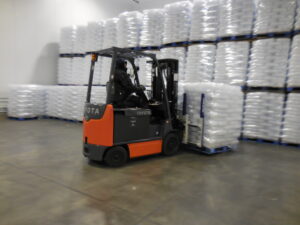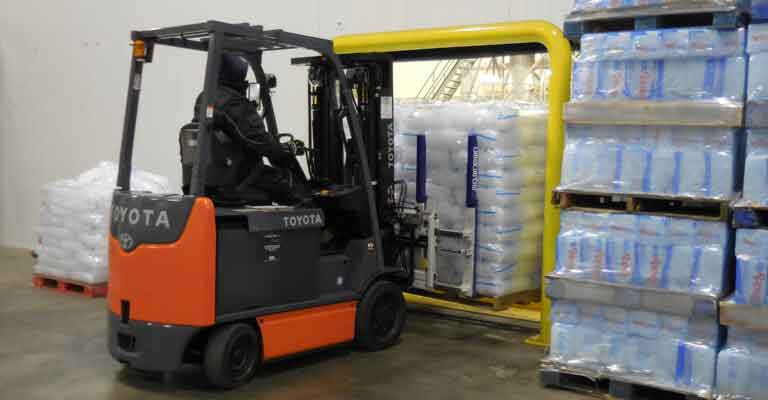Operating a forklift in a cold storage environment has unique challenges and safety considerations. This blog post will address common questions about forklift operations in cold storage applications to ensure safety, efficiency, and productivity in these demanding conditions.
1. What are the main challenges of operating a forklift in a cold storage environment?
Cold storage environments present challenges like reduced battery performance, slippery surfaces, and decreased visibility due to condensation or frost on the forklift and racking. Forklift operators must also contend with the risk of hypothermia and frostbite.
2. How are forklift batteries affected by cold temperatures, and what can you do to mitigate this?
Cold temperatures can reduce the efficiency and capacity of forklift batteries. It’s essential to keep batteries warm when not in use, use battery blankets or heated storage, and ensure proper charging procedures. Additionally, consider using lithium-ion batteries that are less affected by cold temperatures than traditional lead-acid batteries.
3. What safety precautions should forklift operators take in cold storage facilities?
Operators should wear appropriate cold-weather gear, including insulated clothing, gloves, and headgear. Maintain clear visibility by regularly defrosting or clearing condensation from the windshield and ensuring good lighting in the facility. Take frequent breaks to avoid exposure to extreme cold and prioritize safety above all else.
4. What kind of tires work best on forklifts in cold storage applications?
In cold storage applications, it’s advisable to use non-marking tires designed for indoor use. As the name suggests, these tires are less likely to leave marks on the floor and provide better traction on icy or wet surfaces.
5. Are there specific forklift options or modifications for cold storage use?
Yes, options and modifications like heated cabins, additional lighting, and non-slip mats can improve safety and efficiency in these challenging conditions. Make sure any options or modifications are compliant with safety regulations.
6. How should forklift operators adjust their driving techniques in cold storage facilities?
Operators should drive more slowly and cautiously in cold storage environments due to reduced traction. Be mindful of potential ice patches and use gentle, controlled movements. Avoid abrupt starts and stops to prevent accidents.
7. How can forklift maintenance be adapted for cold storage conditions?
Regular forklift maintenance is crucial. Ensure the forklift’s heating system, defrosters, and lighting are in top condition. Use lubricants and fluids rated for cold temperatures and implement a preventive maintenance schedule to address cold-related wear and tear.
8. What role does proper training play in forklift operation within a cold storage facility?
Proper training is paramount. Forklift operators should receive specialized training that covers the unique challenges of cold storage environments, including the impact of cold temperatures on equipment and safety procedures specific to these conditions.
Forklift operators in Los Angeles County can sign up for forklift certification training in Santa Fe Springs on the first and third Friday of every month.
9. Are there regulations or standards for forklift operation in cold storage facilities?
While there are no specific regulations solely for cold storage, general forklift safety regulations apply. Additionally, it’s essential to adhere to regulations related to cold storage safety, such as maintaining emergency exits and fire suppression systems in proper working order.
10. How can forklift operators stay alert and focus during long shifts in cold storage environments?
Staying alert is crucial for safety. Operators should take regular breaks in warm areas to prevent cold-related fatigue and implement shift rotations to avoid extended exposure to extreme cold. Hydration and nutrition are also important.
You can maintain a productive and safe work environment in even the coldest conditions by understanding the unique challenges and taking appropriate measures such as battery care, safety precautions, and equipment adjustments. Stay warm and safe out there!
Would you like an expert to help determine which truck and specifications suit your cold storage operation? Contact us to schedule a site visit today.
Tags: productivity, warehouse solutions
